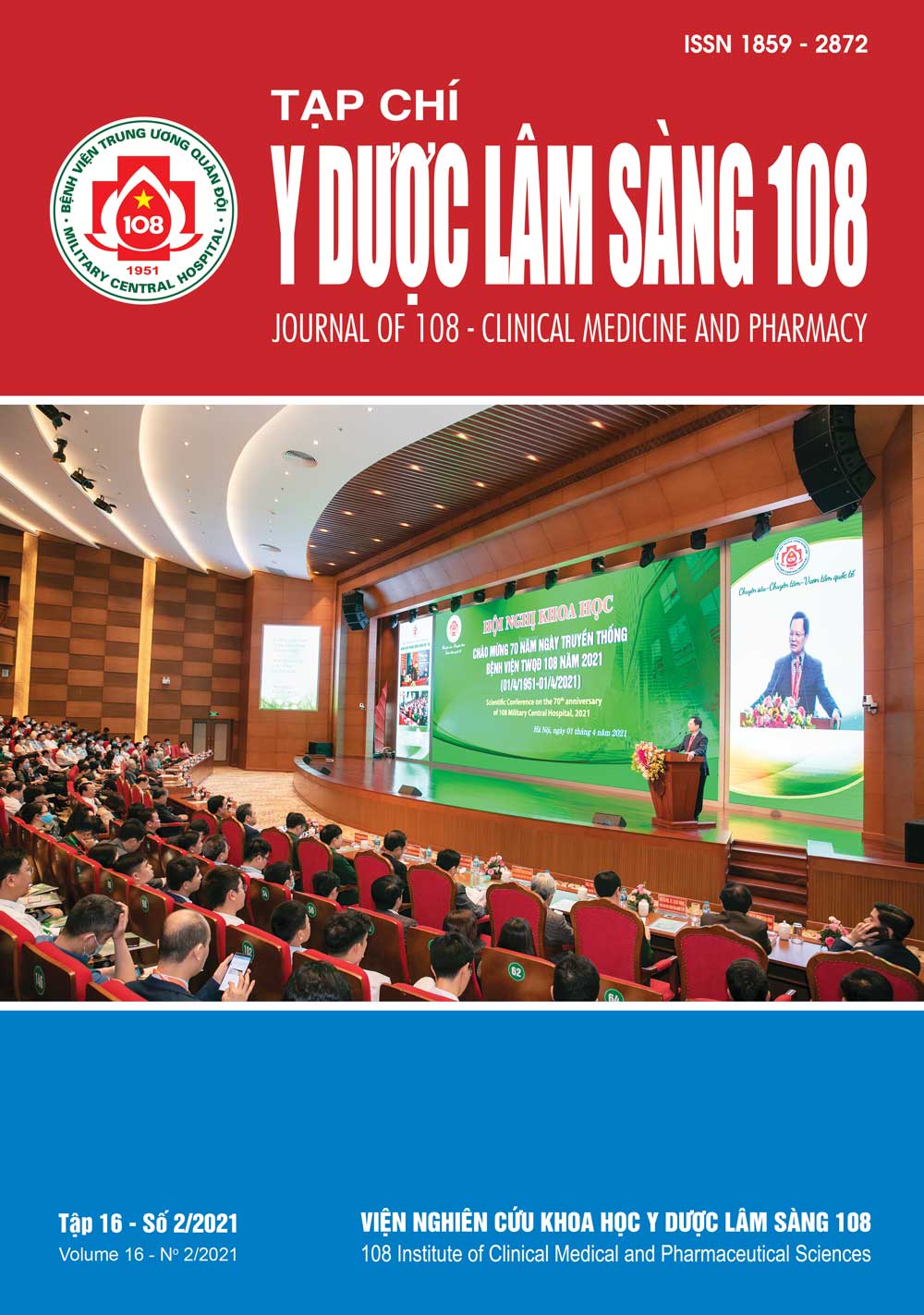Nghiên cứu đặc điểm một số hội chứng lão khoa và mối liên quan với chức năng thể chất ở người cao tuổi có bệnh thận mạn tại Bệnh viện Lão khoa Trung ương
Main Article Content
Keywords
Tóm tắt
Mục tiêu: Tìm hiểu đặc điểm một số hội chứng lão khoa và mối liên quan giữa một số đặc điểm nhân trắc và một số hội chứng lão khoa thường gặp với chức năng thể chất ở bệnh nhân cao tuổi có bệnh thận mạn tại Bệnh viện Lão khoa Trung ương. Đối tượng và phương pháp: Nghiên cứu mô tả cắt ngang trên 101 bệnh nhân ≥ 60 tuổi đến khám và điều trị tại Bệnh viện Lão khoa Trung ương từ tháng 01 đến tháng 05/2018. Bệnh nhân được phỏng vấn theo bộ câu hỏi thống nhất, chức năng thể chất đánh giá bằng test Short Physical Performance Battery (SPPB): SPPB < 10 điểm là suy giảm chức năng thể chất. Kết quả: Tuổi trung bình ở nhóm có suy giảm chức năng thể chất cao hơn nhóm không có suy giảm chức năng thể chất có ý nghĩa thống kê (p<0,05). Bệnh nhân có tuổi ≥ 80 làm gia tăng nguy cơ suy giảm chức năng thể chất lên 3,84 lần (95%CI: 1,47 - 10,38, p<0,05). Tỷ lệ bệnh nhân có suy giảm chức năng thể chất ở nhóm có trầm cảm cao hơn có ý nghĩa thống kê so với nhóm không có trầm cảm (p<0,05). Trầm cảm gia tăng nguy cơ suy giảm chức năng thể chất lên 6,99 lần (95%CI: 1,91 - 31,9, p<0,05). Kết luận: Tuổi cao và trầm cảm có mối liên quan với gia tăng suy giảm chức năng thể chất ở người cao tuổi có bệnh thận mạn.
Article Details
Các tài liệu tham khảo
2. Guralnik JM, Simonsick EM, Ferrucci L et al (1994) A short physical performance battery assessing lower extremity function: Association with self-reported disability and prediction of mortality and nursing home admission. Journal of gerontology 49(2): 85-94.
3. Cooper R, Kuh D, Cooper C et al (2010) Objective measures of physical capability and subsequent health: A systematic review. Age and ageing 40(1): 14-23.
4. Lattanzio F, Corsonello A, Abbatecola AM et al (2012) Relationship between renal function and physical performance in elderly hospitalized patients. Rejuvenation research 15(6): 545-552.
5. Butterfield G, Thompson J, Rennie M et al (1997) Effect of rhGH and rhIGF-I treatment on protein utilization in elderly women. American Journal of Physiology Endocrinology And Metabolism 272(1): 94-99.
6. Reese PP, Cappola AR, Shults J et al (2013) Physical performance and frailty in chronic kidney disease. American journal of nephrology 38(4): 307-315.
7. KDIGO (2012) Clinical practice guideline for the evaluation and management of chronic kidney disease. Kidney International supplements 3(1).
8. Nguyen Xuan Thanh, Nguyen Ngoc Tu, Nguyen Trung Anh, et al (2019) Polypharmacy at discharge in older hospitalised patients in Vietnam and its association with frailty. Australas J Ageing. 10.1111/ajag.12722. doi:10.1111/ajag.12722.
9. Borson S, Scanlan JM, J Watanabe et al (2006) Improving identification of cognitive impairment in primary care. International journal of geriatric psychiatry 21(4): 349-355.
10. Yesavage JA, Brink TL, Rose TL et al (1982) Development and validation of a geriatric depression screening scale: A preliminary report. Journal of psychiatric research 17(1): 37-49.
11. B Vellas, H Villars, G Abellan et al (2006) Overview of the MNA®-its history and challenges/discussion. The journal of nutrition, health & aging 10(6): 456.
12. Walker SR, Brar R, Eng F et al (2015) Frailty and physical function in chronic kidney disease: The CanFIT study. Canadian journal of kidney health and disease 2(1): 32.
13. Penninx BW, JM Guralnik, Ferrucci L et al (1998) Depressive symptoms and physical decline in community-dwelling older persons. Jama 279(21): 1720-1726.
14. Fried LF, Lee JS, Shlipak M et al (2006) Chronic kidney disease and functional limitation in older people: Health, aging and body composition study. Journal of the American Geriatrics Society 54(5): 750-756.
 ISSN: 1859 - 2872
ISSN: 1859 - 2872
